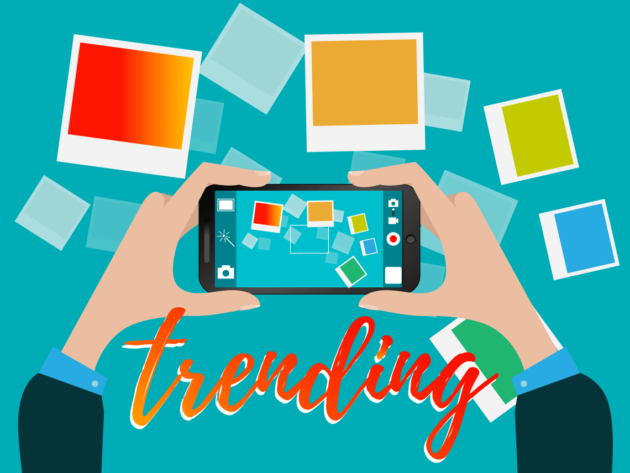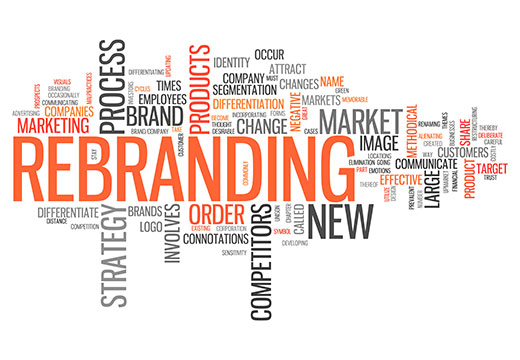What’s Trending in Marketing Photography for 2017
Posted by Tammy on June 15, 2017
So you’ve got an ad, flier, or social media post deadline coming up, and you’re looking for that killer image to call out to your audience. But what does that look like? It’s a question that many marketers like you have asked. And from “the chosen,” trends emerge to help us stay current.
So to help you with what’s hot right now, lets take a quick look back at what was Hot in 2016, and what is Hot in 2017.
FIRST, A LOOK BACK AT 2016.
In 2016, we saw a huge emphasis on people connecting with community, and genuine moments. Posed studio photos that screamed of “stock photo” were already long gone. People had gotten so good at tuning them out they became white noise. So what were the stand outs that embodied the opposite of staged and fake? We saw a few ways it manifested in photography: the return of flash photography, the return of film, body art and neon haze.

Flash photography, easily identified by its bright light, hot spots and harsh shadows, also brings that quality of “in the moment.” It feels authentic, even when it’s completely staged because it gives the impression that there wasn’t time to stage it.

Film, identified by its analog and grainy quality, saw a resurgence. With so many instagram filters being used for everyday photos, the audience cast a vote for enhanced reality. Photographers were called back to the traditional media of film to provide a truly authentic version of the “filtered” digital images.

Body art made its way into mainstream in a big way. Tattoos were flaunted instead of covered up, and reflected the growing acceptance of body art in society. While not seen much in photos in the corporate world, they still made their way into many other ad media.

Neon Haze was everywhere. This technique of turning sharp colorful photos of the here and now into neon versions reminiscent of decades old polaroids became prevalent. Its appeal can probably be attributed to Instagram’s influence, but its popularity may be because it functioned so well on websites. These images were bright and colorful and, at the same time, websites could take advantage of these photo’s low contrast to easily place legible type on top of them.
THAT BRINGS US TO 2017.
So now that we’re smack dab in the middle of 2017, let’s take a look at what trends persist, and what has taken their place. After all, while trends never last forever, some have a knack for sticking around.
In 2017, we are still riding the wave of authenticity. Which is no surprise. Millennials are currently the largest generation in the U.S. workforce, as well as in America in general, so the topics that speak to them are going to influence the language marketers need to use today.

Body art is going strong. Bold expressions of individuality… right-on. It’ll be interesting to see if body art starts making its way into photos in a corporate setting. But at this point, everyday people in everyday activities are fair game.

Newer Tech is popping up in images. Laptops are still ok, but tablets and smart phones are where it’s at. Remember when I mentioned Millennials as the biggest group of people looking at your marketing efforts? They conduct business on laptops, but they also conduct business on their smartphones, and I don’t mean phone calls. Photos that mirror their lives resonate with them, and make you look like you are up with the times.

Real world places become the setting for convincing authenticity. Whether in a built environment like a restaurant, bar or home, or against a natural backdrop of forests, gardens or beaches, real is in. You’ll also notice the people in these photos behave naturally and appropriately for their setting.


Alternative Points of View (POV). We are already seeing more birds-eye views thanks to drones. But we’re also seeing more first person POV images—walking in on a surprise birthday party; mountain biking on a wooded trail; holding hands with the love of one’s life in a romantic setting. With the rise of virtual reality (VR) and augmented reality (AR), we’ll continue to see more of these alternative POV shots to mirror advances in technology.


Social commentary is also trending this year. This is where you’ll see a range from subtle to extremely bold. Brands are taking a risk in revealing where they stand on social issues because their customers, especially Millennials, care about where you stand. Whether it’s a message of tolerance, diversity, or breaking away from traditional roles, a surge of socially charged topics are making their way into the images we see on all channels.
We’re not even half way through 2017. There’s still half a year to witness new shifts… and I’ll be watching.
While this list is nowhere near comprehensive, these are areas I’ve been following. If you are interested in a more comprehensive trend report, large stock photo houses like Getty and Stocksy usually prepare yearly trend forecast reports based on their search data.
Tammy Deng is an Art Director at Total Spectrum Advertising – and an ace photographer to boot. She is also a skilled client mind reader who has a habit of nailing concepts and ideas the first time and then knocking them out of the park.





